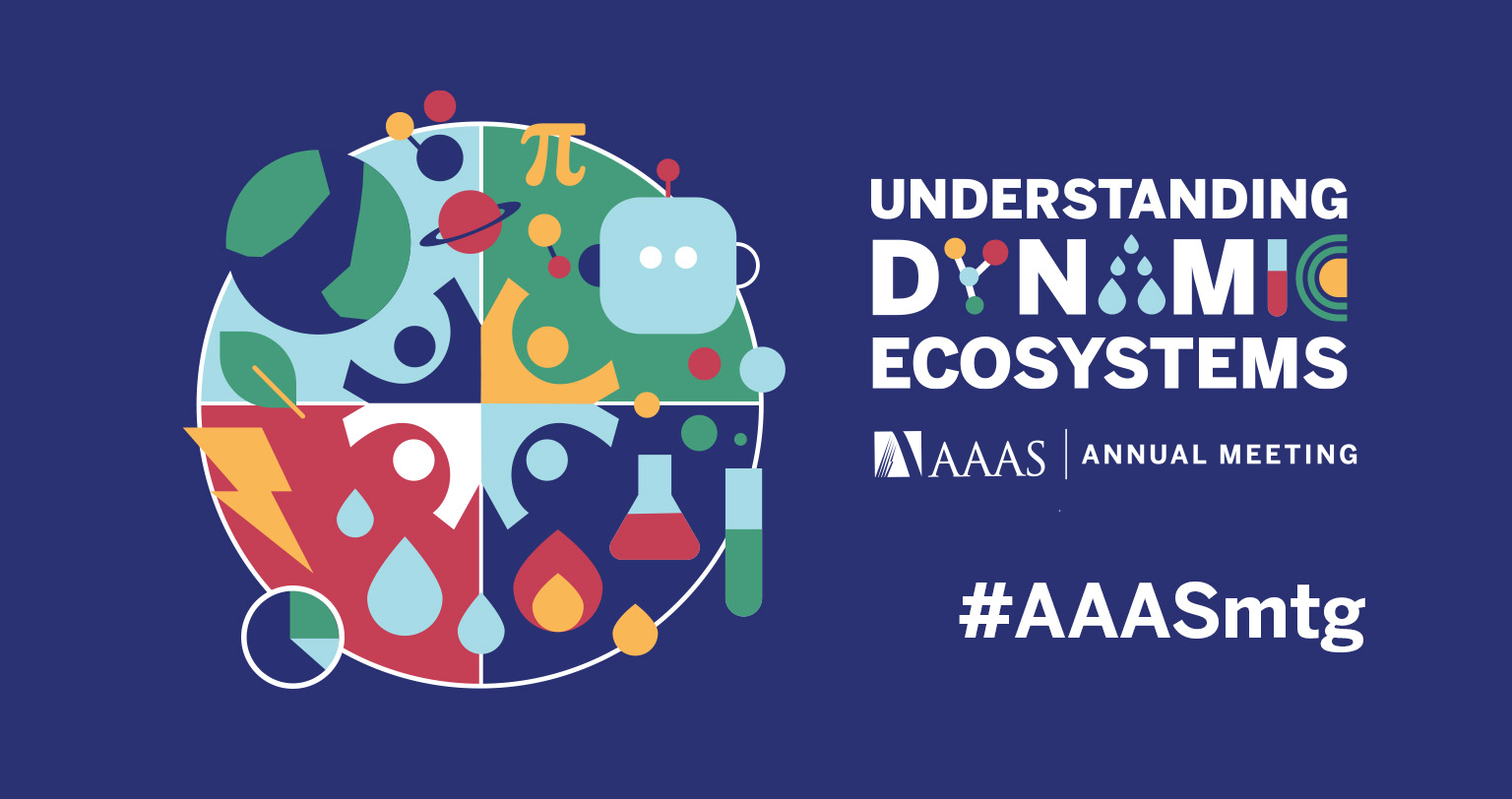ETH Meets You at the AAAS 2021
ETH Zurich hosts the symposium, "An Epidemiological Blueprint for Understanding the Dynamics of a Pandemic" at the AAAS 2021 - American Association for the Advancement of Science's Annual Meeting.

An Epidemiological Blueprint for Understanding the Dynamics of a Pandemic
Scientific and public health experts have been raising the alarm for decades, imploring public officials to prepare for the inevitability of a viral pandemic. Infectious epidemics seemingly as benign as “the flu” and as deadly as the Ebola virus provided ample warning, yet government officials and social infrastructures seemed caught off guard and ill prepared when COVID-19 struck.
This future-oriented session identifies the technological tools that scientists have developed to decipher the genetic code of SARS-CoV-2. Researchers can now trace the epidemiological origins of the virus and use this forensic evidence to monitor its spread. Such tools compensate, to some extent, for the lack of international coordination, compliance and availability of contact-tracing data.
The session also takes a closer look at the epidemiological evidence of COVID-19’s viral origins from bats to humans, most likely via an intermediary animal. It presents a novel biochemical tool that enables an understanding of transmission retrospectively. Such knowledge can also serve as a potential early warning system for future pandemics.
Finally, it addresses what we can learn from 2020 about how to structure the complexities of navigating daily life and how we can live more sustainably as we coexist with the microbial world. Panelists will evaluate the potential use of a multi-lateral approach, which could provide the opportunity for researchers and policy-makers to develop an internationally coordinated blueprint for the future.

SPOTLIGHT Videos
external page WATCH "SPOTLIGHT VIDEOS" - registration or media accreditation required
Log into the AAAS 2021 Virtual Platform and Video Library, search for "blueprint" to find videos pertaining to this session.
LIVE Panel Discussion
Tuesday, 9 February 2021
11.00 US Eastern/10.00 Central/17.00 Basel (CET)/Midnight Singapore Time
external page ETH Zurich's Scientific Session programme
external page Register for AAAS 2021
Press/News Briefing
Tuesday, 9 February 2021 with Tanja Stadler, Linfa Wang, and Sarah Cobey
10.00 US Eastern/9.00 Central/16.00 Basel (CET)/23.00 Singapore Time
external page WATCH the News Briefing
external page EurekAlert! published news release for this session
external page Newsroom registration information for AAAS 2021
Moderator
Rethinking Living

Chris Luebkeman, ETH Zurich heads the Strategic Foresight Hub at ETH Zurich.
Moderating the exchanges in the Spotlight Videos and upcoming LIVE session, Dr. Luebkeman explores the dynamic ecosystem of the pandemic, mapping out a blueprint for understanding it, and how it inspires humanity to rethink living.
Speakers
Monitoring the Spread of COVID-19 through Genomes and Epidemiological Data

Prof. Dr. Tanja Stadler, Associate Professor at the Department of Biosystems Science and Engineering, ETH Zurich and a member of the Swiss National COVID-19 Science Task Force.
Real-time statistical data analyses and speedy implementation of derived measures could stop epidemics in their tracks. Just like in humans, the genetic codes of pathogens reveal a decipherable blueprint. Tens of thousands of SARS-CoV-2 samples empower researchers to reconstruct transmission links when contact-tracing data is unavailable. Learn how a Swiss lab combined classical epidemiological data with new statistical tools to yield a timely, inexpensive, but influential monitoring tool.
Computational Evolution - Tanja Stadler's research group at ETH Zurich
"Our goal must be low case numbers" (recent ETH Zurich News)

Planning and Policy in the Face of an Existential Threat

Dr. Michael T. Osterholm, Regents Professor and Director of the Center for Infectious Disease Research and Policy at the University of Minnesota. Dr. Osterholm also served on the Biden Transition Team's COVID-19 Advisory Board.
Public health experts have been cautioning government officials of the threat of viral diseases such as Ebola, SARS, and even Influenza for decades. Yet even in the face of an existential threat, humankind - its social structures and systems - seem to fall short affecting countless of lives. This session focuses on the need for a coordinated international governance structure and a strategic blueprint to save us not only from viral disease, but from also from ourselves.
external page AAAS 2021 Session - Planning and Policy in the Face of an Existential Threat
external page Center for Infectious Disease Research & Policy (CIDRAP) at Univeristy of Minnesota
Pandemic Control - From Bats to Animal X to Humans

Dr. Linfa Wang, Professor of Emerging Infectious Diseases at Duke-NUS Medical School, Singapore
From bats to humans, this session explores why bats harbor viruses and how they transmit infection to humans. Learn how a newly developed biochemical assay helps researchers to hone in on the origins of SARS-CoV-2 as well as assessing the effectiveness and longevity of various vaccines. Understanding viral origins and transmission serves as an early warning system to mitigate future pandemics. A “One Health” approach is needed to achieve maximum success in preventing future zoonotic outbreaks.
external page AAAS 2021 Session - Pandemic Control - From Bats to Animal X to Humans
external page Bats & pangolins in Southeast Asia harbour SARS-CoV-2-related coronaviruses, reveals new study. (Related publication Duke-NUS Medical School / Nature Communications on 9 February 2021)
external page Emerging Infectious Diseases at Duke-NUS Medical School
Respondent
Halting the Spread

Sarah Cobey, Associate Professor in the Department of Ecology and Evolution at the University of Chicago
In the AAAS News Briefing, Dr. Cobey will map out blueprints for understanding and managing the dynamics of fast-evolving pathogens. Cobey identifies how factors such as age and immune history influence vaccine efficacy, investigates the potential for vaccines to influence pathogen evolution, and provides context for policy-makers to develop effective mitigation and vaccination strategies. Dr. Cobey will discuss prioritization strategies for COVID-19 vaccination and why concerns about vaccine escape should not slow the distribution of primary doses.

Media Kit and Organizer Contact
An official press release related to this AAAS 2021 session will be forthcoming in the external page EurekAlert! platform. Media kit with additional images
Contact: Marianne Lucien, International Communication Officer, ETH Zurich to set up interviews with our speakers, respondent, and moderator for this symposium.
Articles / Publications /Resources
Blueprint for Understanding the Pandemic
Our goal must be low case numbers
external page Swiss National COVID-19 Science Task Force, Genomic Characterization / Tanja Stadler
external page “A novel SARS-CoV-2 related coronavirus in bats from Cambodia” – preprint from bioRxiv / Linfa Wang
external page “Lessons from the host defences of bats, a unique viral reservoir” – Nature / Linfa Wang
external page Center for Infectious Disease Research and Policy / Michael Osterholm